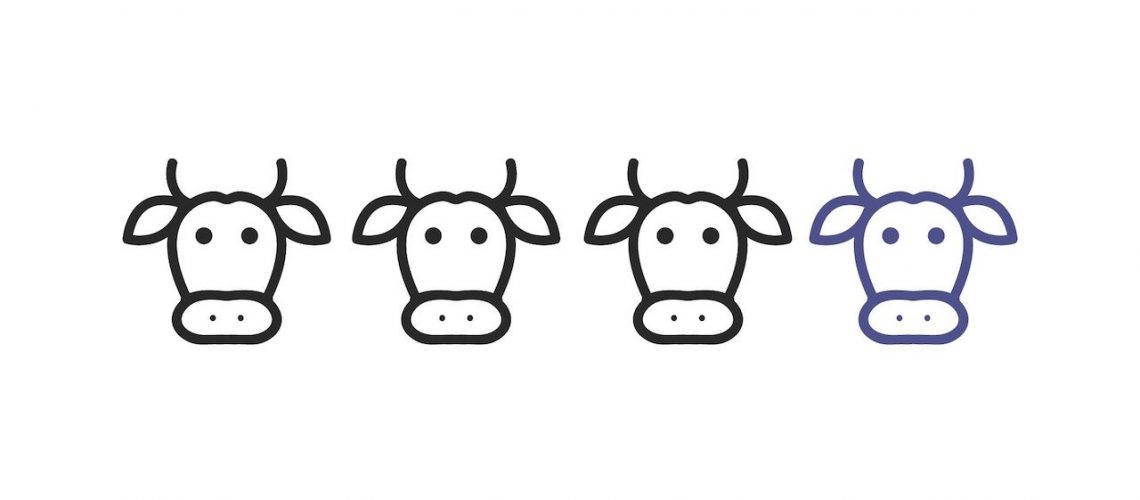We, people in business, should probably talk about commoditization pressure more than we do. Commoditization is a business bugaboo; it’s easy to miss it while it’s happening, and once it happens, it’s almost impossible to reverse. It reduces profits for businesses and saps the vitality of markets. Commoditization hurts all of a business’s stakeholders. It hurts all competitors in a particular industry. In short, nobody is safe.
What is Commoditization Pressure?
For a lot of people, including business owners, this might be their first time hearing this term. Commoditization pressure is a force exerted by consumers that drives sameness in the market. Here’s how it works: a new feature is added to a product. Customers love the new feature, and the firm that introduced it is able to charge a price premium. Over time, customers come to expect and even demand that feature. Competitors must copy that feature in order to continue to compete.The new feature is now standard; it no longer commands a price premium, and consumers will reject products that don’t have it.
If you are selling in a market in which there is a high degree of sameness, or a low degree of differentiation, you may be selling in a commoditized market.
Consumers don’t mean to exert this pressure; they want the real choice, the high quality, and the identity benefits that come with purchasing differentiated products.
So What’s the Problem?
You might wonder why this is such a big deal. You might think, well customers get what they want and businesses are still able to sell products, so where’s the problem here? The problem is that firms in commoditized markets have no option but to compete on price. And a market where the main competition is price competition hurts everyone involved. The company must cut costs so they can reduce prices. Eventually they will have to accept lower profit margins and count on volume to make up the difference. Cost cutting reduces product quality for consumers. It eliminates labor wherever possible, which hurts employees. Firms competing on price struggle for growth, which hurts shareholders. Firms competing on price contribute less to their communities, and will exert downward pressure on the cost of inputs, hurting suppliers. Companies struggle to compete for stagnant market share. Nobody wins in a commoditized market.
The Answer Isn’t New Features
Or rather, the long-term answer isn’t new features. New features for your product will help you for a time, but in a year or three, the new feature that you introduced will become standard. Every physical feature of a product or service that is in high demand by the consumer will be copied by competitors given enough time. What firms need to avoid commoditization is a differentiation factor that is extremely difficult to replicate, and no physical feature is going to cut it. So what is the answer?
The Power of Differentiation
Differentiation exerts the opposite pressure from commoditization. Enduring differentiation is better for everyone; margins improve, customers benefit, employees (hopefully) benefit, the market grows, and competition between firms becomes a productive force, making the market more vibrant.
Differentiation doesn’t just convince consumers to buy; it keeps them loyal, and if you’re lucky, makes them advocates for your product or service.
So how does a firm differentiate itself, if not through features? Brand differentiation is absolutely your best, most enduring, most difficult-to-replicate option. When features are no longer enough to draw new customers, your brand’s personality, message, and spirit will bring them in.
So what do you need in a brand differentiator? Three things:
- Relevance – Your brand message must be relevant to your target market. What this means is that it must be something that both resonates with and benefits your customer in some way. You may need to do some market research to make sure you’re hitting this one.
- Authenticity – Your differentiator must make sense for your company, your product or service, and your industry. Consumers will spot an inauthentic message from a mile away, and they’ll punish you for it.
- Proof – You’ll have to be able to prove that your differentiating factor is authentic. Whether that’s a transparent supply chain, or literal receipts from corporate donations, or events that involve your community, you have got to walk the walk.
With these three ingredients, you’ll be set up to differentiate your brand.
So Why Don’t More Firms Use Brand Differentiation?
There are risks associated with differentiation. Some experts argue that consumers don’t really care about differentiation; that they crave the comfort of sameness. But some of our most stunningly successful brands are highly differentiated; Apple and Nike spring immediately to mind, but there are scores more. You might argue that Apple competes on features, but it’s been a minute since Apple did something truly groundbreaking. Maybe since the introduction of the iPhone. Wireless earbuds? Come on. Apple is relying on the strength of its brand, and the loyalty that brand has engendered.
The real risk is that you have to anticipate what will matter to your target market. You may not have data to support this decision; when introducing something truly new, you won’t know for sure whether consumers will want it. You’re placing a bet; record labels never invested in developing models for digital music, in fact they fought the technology tooth and nail. Apple, on the other hand, introduced iTunes and the iPod. And I think it’s reasonable to argue that Apple won that one.
Presenting something to consumers that you’re not sure that they’ll like or want is difficult; development requires investment in time or money (usually both), and if it flops, that investment is gone. Many firms, especially large ones, don’t have the flexibility needed to do this well.
Differentiation is an iterative process, it requires monitoring, measuring, and adjusting depending on customer response. This is further investment.
But if you do it successfully, I guarantee you it’s worth the risk.
Successful Marketing is Key
After you’ve figured out what your differentiating factor is, you have to be able to communicate it to your target audience in a way that’s meaningful to them. This means that you have to understand what context and language will resonate with your consumer best, and where and how to reach your customer.
Doing this successfully requires you to get to know your audience a little. Find out who they are, where they spend their time, and what really matters to them. If you can, find out where and how they shop. Immerse yourself in their culture; learn their language.
After you know your audience, craft your message with your prospective customer in mind. You may need a few tries for this, and you should measure your efforts, test new ones, and adjust as needed.
I don’t mean to make this sound easy, it isn’t. People study and work for years to become experts in this. (If you want to talk to some experts, contact us here.)
If you neglect or fail to differentiate your brand, commoditization is in your future. Differentiation comes with risk, so it’s worth doing some thought and research. Don’t be afraid to target a smaller niche market if you think your brand will be successful there; your first customers will help to bring more in. Have the courage and the strength to be different.




